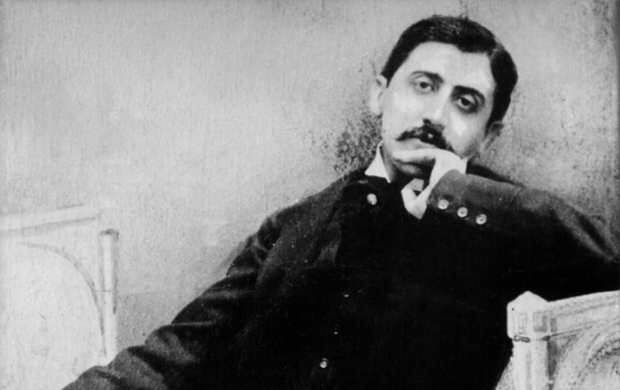Who is marcel proust? The life and work of composing have left great legacies for future generations. This article will tell more about marcel proust
Who is marcel proust?
Marcel Proust was a French writer and novelist, best known for his monumental work “In Search of Lost Time” (À la recherche du temps perdu). He was born on July 10, 1871, in Auteuil, a suburb of Paris, France, and he passed away on November 18, 1922, in Paris.
Proust came from a well-to-do family and received a privileged education. He studied law, but his true passion was literature and writing. He was heavily influenced by the Symbolist movement and other writers like John Ruskin and Charles-Augustin Sainte-Beuve.
His most famous work, “In Search of Lost Time,” is a seven-volume novel that explores memory, time, love, art, and social class. The novel is considered one of the greatest literary achievements of the 20th century and has had a significant impact on modern literature.
The narrative of “In Search of Lost Time” is often described as semi-autobiographical, revolving around the life of the protagonist, Marcel, and his experiences growing up in a privileged French society. Proust’s writing style is characterized by long, intricate sentences and a deep introspective exploration of the human psyche.
Due to his delicate health, Proust led a reclusive life, spending much of his time writing in his cork-lined bedroom. He was known for his social circles, which included prominent figures from the artistic and intellectual elite of his time.
Although Proust did not achieve widespread recognition during his lifetime, “In Search of Lost Time” gradually gained acclaim after his death. Today, Marcel Proust is regarded as one of the most influential writers in modern literature, and his work continues to be celebrated and studied by scholars and readers worldwide.

Life and works
Marcel was the son of Adrien Proust, an eminent physician of provincial French Catholic descent, and his wife, Jeanne, née Weil, of a wealthy Jewish family. After a first attack in 1880, he suffered from asthma throughout his life. His childhood holidays were spent at Illiers and Auteuil (which together became the Combray of his novel) or at seaside resorts in Normandy with his maternal grandmother. At the Lycée Condorcet (1882–89) he wrote for class magazines, fell in love with a little girl named Marie de Benardaky in the Champs-Élysées, made friends whose mothers were society hostesses, and was influenced by his philosophy master Alphonse Darlu. He enjoyed the discipline and comradeship of military service at Orléans (1889–90) and studied at the School of Political Sciences, taking licences in law (1893) and in literature (1895). During these student days his thought was influenced by the philosophers Henri Bergson (his cousin by marriage) and Paul Desjardins and by the historian Albert Sorel. Meanwhile, via the bourgeois salons of Madames Straus, Arman de Caillavet, Aubernon, and Madeleine Lemaire, he became an observant habitué of the most exclusive drawing rooms of the nobility.
In 1896 Proust published Les Plaisirs et les jours (Pleasures and Days), a collection of short stories at once precious and profound, most of which had appeared during 1892–93 in the magazines Le Banquet and La Revue Blanche. From 1895 to 1899 he wrote Jean Santeuil, an autobiographical novel that, though unfinished and ill-constructed, showed awakening genius and foreshadowed À la recherche. A gradual disengagement from social life coincided with growing ill health and with his active involvement in the Dreyfus affair of 1897–99, when French politics and society were split by the movement to liberate the Jewish army officer Alfred Dreyfus, unjustly imprisoned on Devil’s Island as a spy. Proust helped to organize petitions and assisted Dreyfus’s lawyer Labori, courageously defying the risk of social ostracism. (Although Proust was not, in fact, ostracized, the experience helped to crystallize his disillusionment with aristocratic society, which became visible in his novel.)
Proust’s discovery of John Ruskin’s art criticism in 1899 caused him to abandon Jean Santeuil and to seek a new revelation in the beauty of nature and in Gothic architecture, considered as symbols of man confronted with eternity: “Suddenly,” he wrote, “the universe regained in my eyes an immeasurable value.” On this quest he visited Venice (with his mother in May 1900) and the churches of France and translated Ruskin’s Bible of Amiens and Sesame and Lilies, with prefaces in which the note of his mature prose is first heard.
The death of Proust’s father in 1903 and of his mother in 1905 left him grief-stricken and alone but financially independent and free to attempt his great novel. At least one early version was written in 1905–06. Another, begun in 1907, was laid aside in October 1908. This had itself been interrupted by a series of brilliant parodies—of Balzac, Flaubert, Renan, Saint-Simon, and others of Proust’s favourite French authors—called “L’Affaire Lemoine” (published in Le Figaro), through which he endeavoured to purge his style of extraneous influences. Then, realizing the need to establish the philosophical basis that his novel had hitherto lacked, he wrote the essay “Contre Sainte-Beuve” (published 1954), attacking the French critic’s view of literature as a pastime of the cultivated intelligence and putting forward his own, in which the artist’s task is to release from the buried world of unconscious memory the ever-living reality to which habit makes us blind. In January 1909 occurred the real-life incident of an involuntary revival of a childhood memory through the taste of tea and a rusk biscuit (which in his novel became madeleine cake); in May the characters of his novel invaded his essay; and in July of this crucial year he began À la recherche du temps perdu. He thought of marrying “a very young and delightful girl” whom he met at Cabourg, a seaside resort in Normandy that became the Balbec of his novel, where he spent summer holidays from 1907 to 1914, but, instead, he retired from the world to write his novel, finishing the first draft in September 1912.
The first volume, Du côté de chez Swann (Swann’s Way), was refused by the best-selling publishers Fasquelle and Ollendorff and even by the intellectual La Nouvelle Revue Française, under the direction of the novelist André Gide, but was finally issued at the author’s expense in November 1913 by the progressive young publisher Bernard Grasset and met with some success. Proust then planned only two further volumes, the premature appearance of which was fortunately thwarted by his anguish at the flight and death of his secretary Alfred Agostinelli and by the outbreak of World War I.
During the war he revised the remainder of his novel, enriching and deepening its feeling, texture, and construction, increasing the realistic and satirical elements, and tripling its length. In this majestic process he transformed a work that in its earlier state was still below the level of his highest powers into one of the greatest achievements of the modern novel. In March 1914, instigated by the repentant Gide, La Nouvelle Revue Française offered to take over his novel, but Proust now rejected them. Further negotiations in May–September 1916 were successful, and in June 1919 À l’ombre des jeunes filles en fleurs (Within a Budding Grove) was published simultaneously with a reprint of Swann and with Pastiches et mélanges, a miscellaneous volume containing “L’Affaire Lemoine” and the Ruskin prefaces. In December 1919, through Léon Daudet’s recommendation, À l’ombre received the Prix Goncourt, and Proust suddenly became world famous. Three more installments appeared in his lifetime, with the benefit of his final revision, comprising Le Côté de Guermantes (1920–21; The Guermantes Way) and Sodome et Gomorrhe (1921–22; Sodom and Gomorrah).
Proust died in Paris of pneumonia, succumbing to a weakness of the lungs that many had mistaken for a form of hypochondria and struggling to the last with the revision of La Prisonnière (The Captive). The last three parts of À la recherche were published posthumously, in an advanced but not final stage of revision: La Prisonnière (1923), Albertine disparue (1925; The Fugitive), and Le Temps retrouvé (1927; Time Regained).
Proust’s enormous correspondence (although thousands of letters have appeared in print, many await publication), remarkable for its communication of his living presence, as well as for its elegance and nobility of style and thought, is also highly significant as the raw material from which a great artist built his fictional world, for À la recherche du temps perdu is the story of Proust’s own life, told as an allegorical search for truth.
At first, the only childhood memory available to the middle-aged narrator is the evening of a visit from the family friend, Swann, when the child forced his mother to give him the goodnight kiss that she had refused. But, through the accidental tasting of tea and a madeleine cake, the narrator retrieves from his unconscious memory the landscape and people of his boyhood holidays in the village of Combray. In an ominous digression on love and jealousy, the reader learns of the unhappy passion of Swann (a Jewish dilettante received in high society) for the courtesan Odette, whom he had met in the bourgeois salon of the Verdurins during the years before the narrator’s birth.
As an adolescent, the narrator falls in love with Gilberte (the daughter of Swann and Odette) in the Champs-Élysées. During a seaside holiday at Balbec, he meets the handsome young nobleman Saint-Loup, Saint-Loup’s strange uncle the Baron de Charlus, and a band of young girls led by Albertine. He falls in love with the Duchesse de Guermantes but, after an autumnal visit to Saint-Loup’s garrison-town Doncières, is cured when he meets her in society. As he travels through the Guermantes’ world, its apparent poetry and intelligence is dispersed and its real vanity and sterility revealed. Charlus is discovered to be homosexual, pursuing the elderly tailor Jupien and the young violinist Morel, and the vices of Sodom and Gomorrah henceforth proliferate through the novel. On a second visit to Balbec the narrator suspects Albertine of loving women, carries her back to Paris, and keeps her captive. He witnesses the tragic betrayal of Charlus by the Verdurins and Morel; his own jealous passion is only intensified by the flight and death of Albertine. When he attains oblivion of his love, time is lost; beauty and meaning have faded from all he ever pursued and won; and he renounces the book he has always hoped to write.
A long absence in a sanatorium is interrupted by a wartime visit to Paris, bombarded like Pompeii or Sodom from the skies. Charlus, disintegrated by his vice, is seen in Jupien’s infernal brothel, and Saint-Loup, married to Gilberte and turned homosexual, dies heroically in battle. After the war, at the Princesse de Guermantes’s afternoon reception, the narrator becomes aware, through a series of incidents of unconscious memory, that all the beauty he has experienced in the past is eternally alive. Time is regained, and he sets to work, racing against death, to write the very novel the reader has just experienced.
Proust’s novel has a circular construction and must be considered in the light of the revelation with which it ends. The author reinstates the extratemporal values of time regained, his subject being salvation. Other patterns of redemption are shown in counterpoint to the main theme: the narrator’s parents are saved by their natural goodness, great artists (the novelist Bergotte, the painter Elstir, the composer Vinteuil) through the vision of their art, Swann through suffering in love, and even Charlus through the Lear-like grandeur of his fall. Proust’s novel is, ultimately, both optimistic and set in the context of human religious experience. “I realized that the materials of my work consisted of my own past,” says the narrator at the moment of time regained. An important quality in the understanding of À la recherche lies in its meaning for Proust himself as the allegorical story of his own life, from which its events, places, and characters are taken. In his quest for time lost, he invented nothing but altered everything, selecting, fusing, and transmuting the facts so that their underlying unity and universal significance should be revealed, working inward to himself and outward to every aspect of the human condition. À la recherche is comparable in this respect not only with other major novels but also with such creative and symbolic autobiographies as Johann Wolfgang von Goethe’s Dichtung und Wahrheit and the Viscount de Chateaubriand’s Mémoires d’outretombe, both of which influenced Proust.
Legacy of Marcel Proust
Proust projected his own homosexuality upon his characters, treating this, as well as snobbism, vanity, and cruelty, as a major symbol of original sin. His insight into women and the love of men for women (which he himself experienced for the many female originals of his heroines) remained unimpaired, and he is among the greatest novelists in the fields of both heterosexual and homosexual love.
The entire climate of the 20th-century novel was affected by À la recherche du temps perdu, which is one of the supreme achievements of modern fiction. Taking as raw material the author’s past life, À la recherche is ostensibly about the irrecoverability of time lost, about the forfeiture of innocence through experience, the emptiness of love and friendship, the vanity of human endeavour, and the triumph of sin and despair; but Proust’s conclusion is that the life of every day is supremely important, full of moral joy and beauty, which, though they may be lost through faults inherent in human nature, are indestructible and recoverable. Proust’s style is one of the most original in all literature and is unique in its union of speed and protraction, precision and iridescence, force and enchantment, classicism and symbolism.













